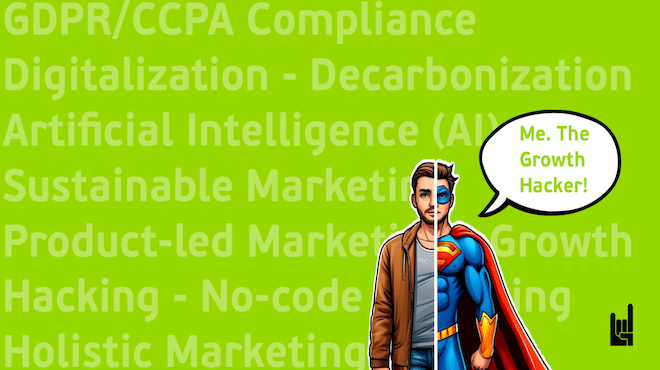The entire approach makes the end-users feel confident about the products to recommend them to others and spread the word.
Companies like Slack, DropBox, Calendly, and Product Board are classic examples of successful product-led growth models.
Let’s dive a little deeper into product-led growth, shall we?
Product-led Growth: The Dropbox Example
Dropbox is one of the frontrunners of the PLG model.
Dropbox identified the market demand and designed a product to meet the needs of the users. It became popular in no time amongst people who were seeking a free storage tool.
Dropbox was accessible and easy to use. Accordingly, users could access Dropbox from the web as well as a local storage option in a hassle-free manner. And now, many users are even automating Dropbox to Google Drive, OneDrive, and BigQuery.
So, one of Dropbox’s commendable early moves was to increase the total number of users, instead of focusing on early-monetizing, through a referral program.
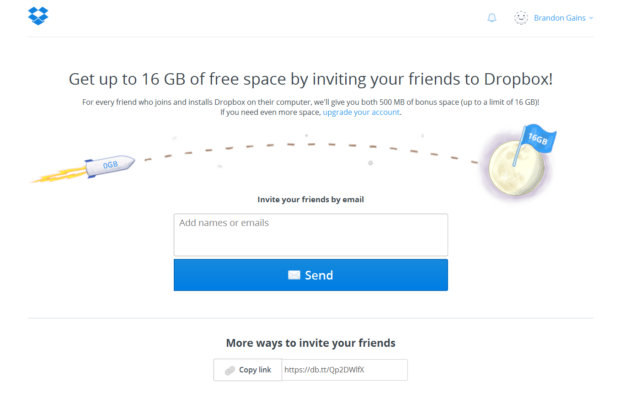
Monetization for Dropbox came in the later period of their business. The makers decided to take the flight of success when the market conditions were favorable.
They continued with their research and updated their current products. After Dropbox became popular and gained a wide user base, a series of unique features were added to gain a competitive advantage. What’s more, these features included access to share folders, running a referral program, and shareable links.
Dropbox found a solution to the problem faced by many individuals in their day-to-day lives. After that, they kept on introducing unique yet easy-to-use features to make the product speak for itself.
Marketing-led vs. Product-led vs. Sales-led
The three basic strategies business owners use to drive profits are product-led, sales-led, and marketing-led.
- A sales-led approach is a one-to-one sales model where an individual from a company’s marketing team communicates with a prospect.
- A marketing-led strategy is a one-to-many model where businesses advertise their offerings to the masses.
- The product-led strategy lets the product speak for itself and works as a go-to-marketstrategy.
Sales-led Growth Model
B2C is a simple sales process where the sale is made directly to the consumer. On the other hand, B2B is a comparatively complex process where the sale is made to a business instead of an individual.
Sales usually happen when the entire marketing team puts in the effort to convince people to buy from them, through various channels. The sales-led approach is generally followed by businesses that are new to the market.
Companies that lack brand awareness have to follow the sales-led growth model to acquire more customers.
Pros of A Sales-led Growth Model
1. Allowing businesses to acquire high lifetime value (LTV) customers. SLG helps acquire customers with a high Annual Contract Value (ACV). But in a practical sense, it leads to poor revenue diversification. In addition to that, one should not simply overlook the probability of a few high ACP customers leaving. If that happens, then your business will face several hardships resulting in employee layoffs.
2. Ideal For Hyper-Niche Solutions. If your business deals in products with a small Total Addressable Market (TAM), then a sales-led model can take over the product-led approach. The logic behind the same is elementary; the product-led model is the best fit for larger TAM companies.
3. Ideal For New & Unique Categories. The sales-led growth model is technically ideal for businesses that are all set to launch a product or service in a new category. Because in such situations, you might require to educate your target audience about the uses of the offered product.
Cons of Sales-led Growth Model
1. The Cost of Acquiring A New Customer is Too High . CAC, an abbreviation for the cost of acquiring a customer, is usually relatively high in a sales-led growth model. If you want to keep your high-touch sales model profitable, you will require more high LTV customers. To reach a high LTV, sales-led businesses charge a humongous amount of premiums from the customers. Most of the time they have to, as the actual cost of acquiring a customer is high. After you’ve received customers with high LTV, your next focus should be on retaining them for as long as you can. To do that, you will have to understand your competitor’s customer acquisition and retention model thoroughly.
2. Irrespective of The High CAC, The Model Has Many Loopholes. The plan is not full-proof and lacks in several ways. The process promotes high friction in the buying procedure, which increases the length of the buying process.
How is Product-led Growth Different From a Sales-led Growth Model?
Different kinds of businesses and products need different kinds of models to grow.
Businesses in the SaaS (Software as a Service) world operate under three basic models: Self Service, Transactional, and Enterprise.
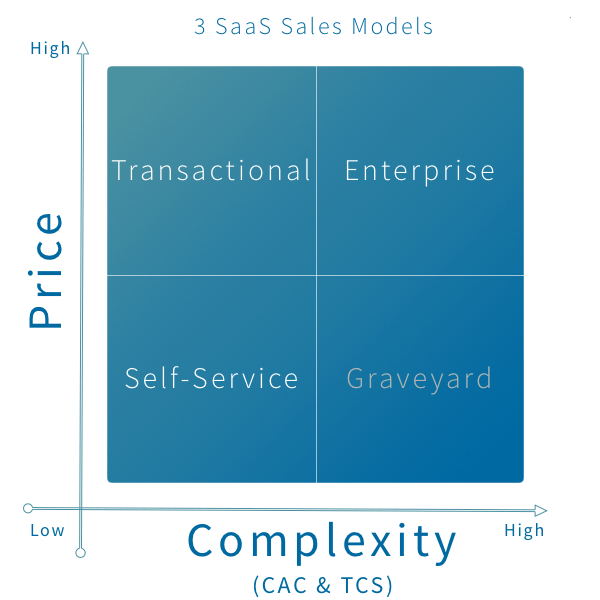
A SaaS that it’s high in complexity and expensive, falls into the Enterprise category.
On the contrary, a SaaS that it’s easy to use and relatively cheap is described as Self Service.
A transactional SaaS, as a hybrid model, is somewhere in-between. This means that both automated lead generation strategies and a sales team are needed.
| Product-led Growth | Sales-led Growth Models |
| Self-service & transactional products | Complex products |
| Freemium model | Paid model |
| Ideal for companies who are targeting niche audiences | Ideal for targeting and reaching out to the masses |
| It focuses on product-qualified leads (PQLs) | It focuses on sales-qualified leads (SQLs) |
Product-led Growth Strategies
By now, you already know that a product-led model is a concept that uses the product itself to acquire new customers. However, it is also used by businesses that are willing to expand. In simple words, companies who seek PLG strategies include a product that comes with a free-trial period or consists of a freemium version. A PLG strategy should allow users to identify their needs and usage of specific software and then let them decide whether to buy it.
One of the core components of a product-led growth strategy is that it is customer-centric.
You should have a good understanding of the following:
- What are the exact needs of your potential customers?
- Which products are they currently using to satisfy their needs?
- What features do they use the most?
- Which channels are they using to find the products?
- What product comparisons do they do before selecting a product?
- How much are they willing to spend on the product?
- What search queries are they using to find your product?
- Are people searching online for your brand/product?
- What search queries are they using to find help related to using your product?
- What are the customer sentiments regarding your brand/product?
Components of a Product-led Growth Strategy
- The product itself is a driving force to acquire new customers. Customer service plays a crucial role here because customers need to be nurtured and kept well-informed based on customer feedback.
- The product must trend and have the power to go viral, compelling users to share it with their peers.
- Marketers have to get involved with the process of onboarding users, selling processes, and also in retaining the customers.
- Business owners should work towards providing the ultimate experience to the users.
- The focus is on running pilots in the self-service sales funnel before hiring sales reps.
- Businesses should seek an opinion from the people through market research surveys.
- Buyers need to be categorized to offer a tailor-made solution that suits individual needs.
- An eye on the product usage activities needs to be kept, and attributes should be defined to strategize the customer onboarding and upgrading sequence.
Product-led Growth Metrics
Product-led growth metrics are just some of the parameters or KPIs to measure the efficiency and ROI of the product. Here are some growth metrics of PLG:
Time to value or TTV is a parameter to measure the time taken by newly acquired customers to use the product and realize the value of it on their own.
Product-qualified leads or PQLs refer to the people who already have realized your product’s value and are currently using either the freemium version or are just having a free trial.
Expansion revenue is used to measure the revenue generated in upsells, cross-sales, or add-ons from the existing customers.
The average revenue per user or ARPU is the median amount of money you make from an individual. It is usually calculated when the total monthly recurring revenue (MRR) is divided by the total number of customers
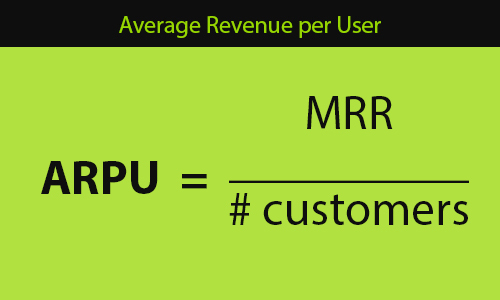
Customer lifetime value or CLV predicts the loyal and valuable customers. How much of total revenue can be earned from an individual customer over the years is calculated and considered. Steve Jobs once said that “Marketing is about values”. You need to promote brand values to establish long-term relationships with your customers. This is one of the best marketing tips.
Net revenue churn or NRC is the amount of money lost after revenue generated from newly acquired customers is taken into consideration. The value is derived by subtracting new and expansion revenue from the revenue lost in that particular period.

Virality is often referred to as a state when the rate of adoption increases dramatically because more and more people are sharing it.
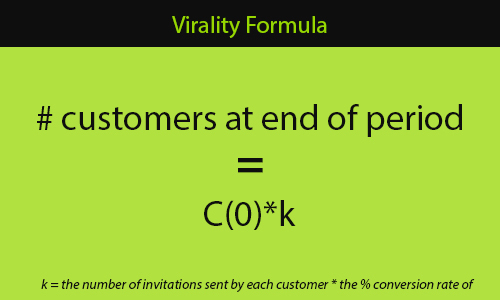
Read here for more product-led growth metrics.
Product-led Growth – Benefits
Product-led firms tend to grow faster than sales-led or marketing-led companies. This happens because businesses that adopt a PLG strategy have to focus on making their product excellent.
Offering your target audience a free-trial period or a freemium version of your tools or software helps yous widen the top of your funnel. This is powerful because here, the end-user is using and evaluating the exact product for free.
It is easier to scale a business when you use a product-led sales growth model. While your competitors are busy hiring salespeople, you are focusing on ways to make your product more valuable and desirable amongst the customers.
Businesses that use a PLG approach tend to have lower customer acquisition costs (CAC). One of the prominent reasons behind faster sales or conversions is that your product’s users first tried the software themselves and then opted in for the premium versions without your interference. This generally happens when your customers have realized the value of your products.
If you are a SaaS company, then product-led growth will help you achieve more with a few employees. In addition to that, your product is designed for individuals to onboard themselves without any manhandling, thus reducing your marketing expenses.
Product-led Growth – Conclusion
Businesses who are opting for product-led growth strategies are getting more time to become innovative with ideas, channelizing them into actions by continually adding new and better features to their products.
Constant innovation is the only way to survive in the market when cut-throat competition is rampant.
Are you looking for product-led growth with GrowthRocks?
Theodore has a 20-year experience in running successful and profitable software products. During his free time, he coaches and consults startups. His career includes managerial posts for companies both in Greece and abroad and he has significant skills on intrapreneurship and entrepreneurship.
